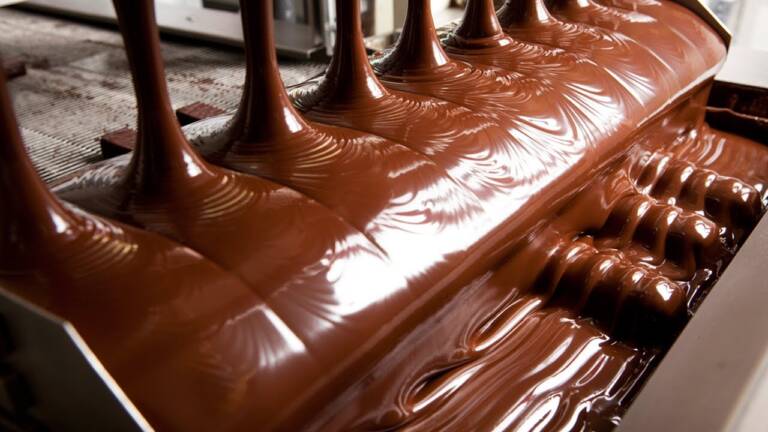Project Report For Chocolate Factory
Introduction
Project Report For Chocolate Factory is as follows.
Chocolate is a culinary product manufactured from the cacao tree’s fruit (Theobroma cacao). Raw, unprocessed chocolate feels harsh and dry, whereas fermented, dried, and roasted chocolate with a little sugar and cream added tastes excellent.
People all across the world adore the delicious flavor of chocolate both on its own and in a wide range of dishes. More than half of the chocolate consumed in the United States comes from West African countries, primarily Ghana and Cote d’Ivoire.
Cacao plants produce fruit that is roughly the size and shape of a football. These lumpy berries, or pods, contain up to 50 sour seeds, or beans, which are covered in white pulp. The pods are collected by hand and sliced apart to extract the cocoa beans, which are then placed in covered trays for several days to ferment. The beans are stretched out to dry after fermentation.
Large machines, massive storage tanks, and pipes moving from one location to another occupy an industrial chocolate plant. Typically, chocolate is made in a continuous flow process along a manufacturing line dedicated to creating vast amounts of a specific product (such as blocks of milk chocolate).
Like any other industrial factory, safety, quality, and on-time delivery are critical. Our factories are routinely audited for these aspects. As a result, it is typical to see individuals wearing coats, masks, safety shoes, and sometimes earplugs.
Although it appears sophisticated inside a factory, the technique is actually quite simple. We begin by combining all of the elements that go into making chocolate (such as cocoa mass, sugar, and milk powder), and then the mixture is ground and refined to the required fineness.
The well-refined combination is next subjected to a crucial process known as conching, which removes the acidic taste, reveals the different flavors, and gives the chocolate its smooth texture.
Moving on, the chocolate is being tempered. Tempering provides the chocolate with a lovely surface as well as the proper snap when a piece is broken off. Tempering the chocolate involves heating it to 45 degrees, cooling it to 28 degrees, and then reheating it to 32 degrees.
After this process, the chocolate is ready to be molded into blocks or smaller forms such as chips or pieces. Finally, the chocolate is packaged and shipped to our food makers or gourmet customers, who expertly use it in a variety of chocolate applications such as chocolate bars, pralines, or chocolate ice cream coatings.

Market Potential Of Chocolate Factory
The worldwide chocolate market was valued at USD 42.29 billion in 2021, with a CAGR of 4.98% expected from USD 46.61 billion in 2022 to USD 67.88 billion by 2030.
The global chocolate market is expanding due to rising demand for organic, vegan, sugar-free, and gluten-free chocolates. Because of rising awareness of the harmful effects of synthetic products on health and the environment, the majority of health-conscious and informed consumers have begun to use organic products. Furthermore, seasonal demand influences the selling of premium chocolates.. Various companies release a large selection of chocolate flavors throughout holidays such as Easter and Christmas. Lindt Teddy, dressed in a typical English Christmas pullover,
During the forecast period, the dark chocolate segment is likely to be the largest in the worldwide chocolate market. Dark chocolate has a cocoa solid content of 55-90%. Cocoa beans are rich in phytonutrients, which act as antioxidants and provide additional health advantages. Iron, copper, magnesium, zinc, and phosphorus are all abundant in cocoa beans. Dark chocolate has significantly more of these nutrients than milk chocolate.
Consumers’ increased conviction in the excellence (ingredient quality) of single-origin and bean-to-bar chocolates is predicted to motivate market players to participate in the trend in order to profit. Because of the growing emphasis on the bean-to-bar concept, there has been a substantial increase in demand for speciality chocolate products and premiumized offers in recent years. The single-origin cocoa trend continues to drive innovation and new product creation. This has also increased demand for high-quality cocoa powder, cocoa liquor, and cocoa butter.
Project Report Sample On Chocolate Factory
Need Help?
Create 100% Bankable Project Report
